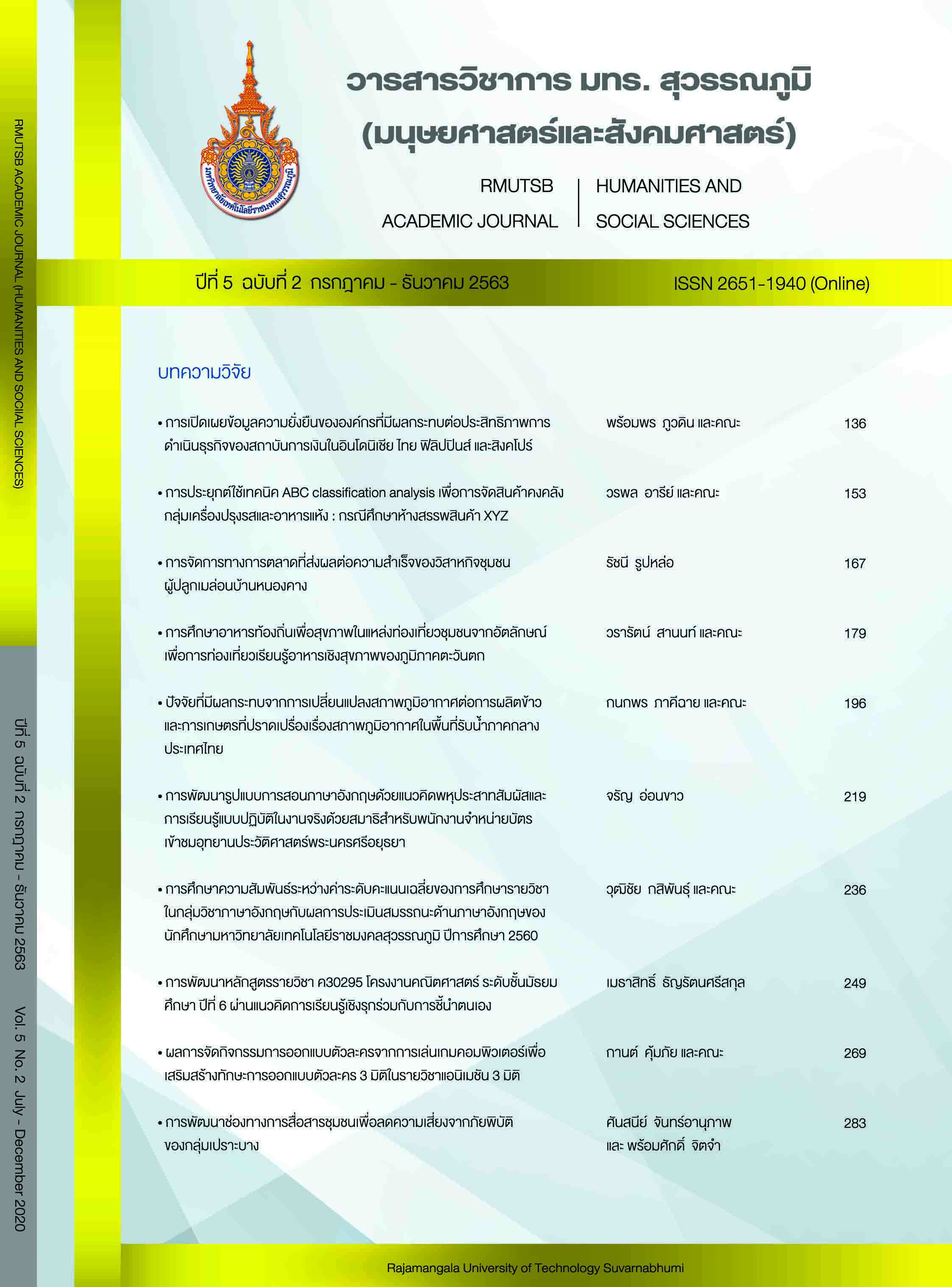Developing community communication channel for disaster risk reduction of vulnerable groups
Main Article Content
Abstract
This paper is based on a participatory action research aiming to develop community communication channel for disaster risk reduction of disabilities and elders in Patong sub-district, Hat-Yai district, Songkhla province. The research methodology is divided into five phases, which are preparation phase, research phase, planning phase, implementation phase and evaluation phase. In research phase, the research employed qualitative data collection methods covered general observation, group interview, and in-depth interview. The research key informants were 145 persons recruited by purposive sampling. The research findings are derived by content analysis method and triangulation. This research found that Patong communities have the awareness in disaster risk management especially flood, storm and land slide. Local administration organizations in Patong sub-district are the center for natural disaster management. However, the defensive measures for vulnerable groups are likely limited due to difficulties in self-reliance when confronting disaster. Developing community communication channel by promoting the role of village health volunteers is arguably able to reduce disaster risks of disabilities and elders. Village health volunteers are tentatively seen as sender and/or personal media in the communication process. The contribution from their role enactment are (1) promoting the culture of disaster prevention in the community, and (2) increasing the capacity of disaster risk reduction by focusing on people-participation sector.
Article Details
References
Cheungsatiansup, K. (2016). Community instrument for disaster management training handbook. Nonthaburi: Suksala. (in Thai)
Department of Disaster Prevention and Mitigation, Ministry of Interior Thailand. (2013). Disaster risk reduction. Retrieved March 20, 2019, from http://www.disaster.go.th/upload/download/file_attach/58a6b30b90d96.pdf (in Thai)
Department of Disaster Prevention and Mitigation, Ministry of Interior Thailand. (2014). Disaster risk reduction for sustainable development. Retrieved October11, 2019, from https://www.adpc.net/igo/category/ID780/doc/2015-mqh7Lx-ADPC-DRR_in_Development_Guideline_2014_THAI.PDF (in Thai)
Kaewthep, K. (2007). Rewind and forward communication for development in Thailand. Journal of Mass Communication Chiang Mai University, 1(1), 1-30. (in Thai)
Patong Subdistrict Administrative Organization. (2019). Action plan in flood, storm and land slide prevention and mitigation 2019. Songkhla: Office of the Chief Administrator of Patong Subdistrict Administrative Organization. (in Thai)
Pravichai, D. (2000). Communication for development. Bangkok: Bangkok University. (in Thai)
Srinoul, N., & Kheovichai, K. (2019). The development of self-management model of health innovation to strengthen community. Inthaninthaksin Journal, 14(1), 93-119. (in Thai)
Witoontat, S., Reyes, M. C., & Sarsycki, M. (2016). Disaster risk assessment guideline. Bangkok: United Nations Development Programme Thailand. (in Thai)


